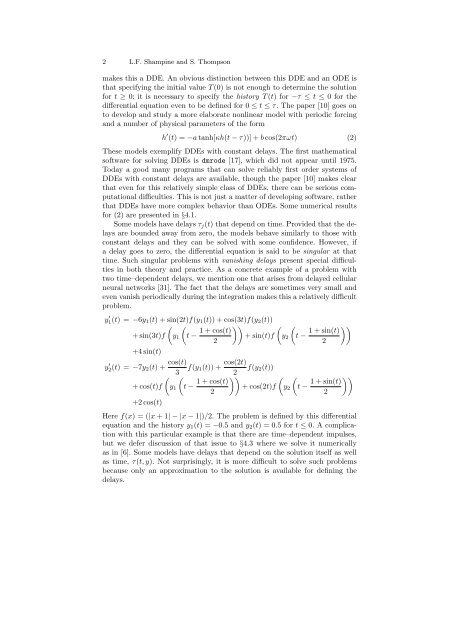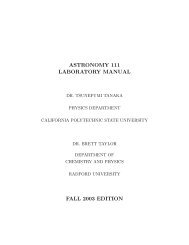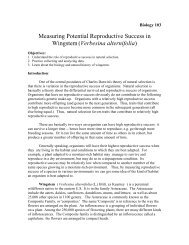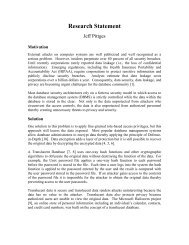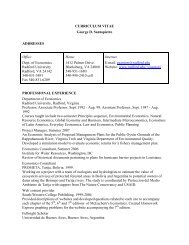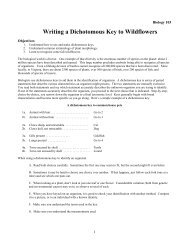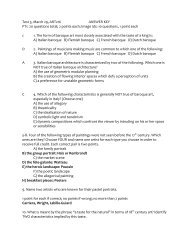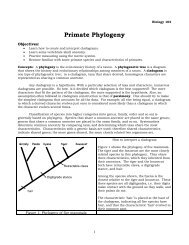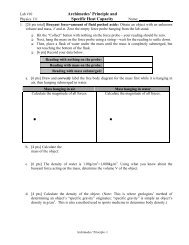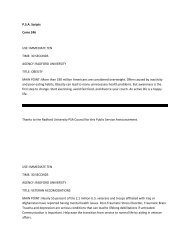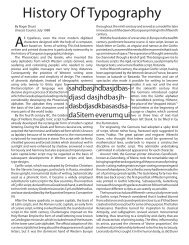Solving Delay Differential Equations - Radford University
Solving Delay Differential Equations - Radford University
Solving Delay Differential Equations - Radford University
Create successful ePaper yourself
Turn your PDF publications into a flip-book with our unique Google optimized e-Paper software.
2 L.F. Shampine and S. Thompson<br />
makes this a DDE. An obvious distinction between this DDE and an ODE is<br />
that specifying the initial value T (0) is not enough to determine the solution<br />
for t ≥ 0; it is necessary to specify the history T (t) for −τ ≤ t ≤ 0 for the<br />
differential equation even to be defined for 0 ≤ t ≤ τ. The paper [10] goes on<br />
to develop and study a more elaborate nonlinear model with periodic forcing<br />
and a number of physical parameters of the form<br />
h ′ (t) = −a tanh[κh(t − τ))] + b cos(2πωt) (2)<br />
These models exemplify DDEs with constant delays. The first mathematical<br />
software for solving DDEs is dmrode [17], which did not appear until 1975.<br />
Today a good many programs that can solve reliably first order systems of<br />
DDEs with constant delays are available, though the paper [10] makes clear<br />
that even for this relatively simple class of DDEs, there can be serious computational<br />
difficulties. This is not just a matter of developing software, rather<br />
that DDEs have more complex behavior than ODEs. Some numerical results<br />
for (2) are presented in §4.1.<br />
Some models have delays τj(t) that depend on time. Provided that the delays<br />
are bounded away from zero, the models behave similarly to those with<br />
constant delays and they can be solved with some confidence. However, if<br />
a delay goes to zero, the differential equation is said to be singular at that<br />
time. Such singular problems with vanishing delays present special difficulties<br />
in both theory and practice. As a concrete example of a problem with<br />
two time–dependent delays, we mention one that arises from delayed cellular<br />
neural networks [31]. The fact that the delays are sometimes very small and<br />
even vanish periodically during the integration makes this a relatively difficult<br />
problem.<br />
y ′ 1(t) = −6y1(t) + sin(2t)f(y1(t)) + cos(3t)f(y2(t))<br />
<br />
<br />
1 + cos(t)<br />
+ sin(3t)f y1 t − + sin(t)f<br />
2<br />
+4 sin(t)<br />
y ′ 2(t) = −7y2(t) + cos(t)<br />
f(y1(t)) +<br />
3<br />
cos(2t)<br />
f(y2(t))<br />
<br />
<br />
2<br />
<br />
1 + cos(t)<br />
+ cos(t)f y1 t − + cos(2t)f<br />
2<br />
+2 cos(t)<br />
y2<br />
y2<br />
<br />
t −<br />
<br />
t −<br />
<br />
1 + sin(t)<br />
2<br />
<br />
1 + sin(t)<br />
2<br />
Here f(x) = (|x + 1| − |x − 1|)/2. The problem is defined by this differential<br />
equation and the history y1(t) = −0.5 and y2(t) = 0.5 for t ≤ 0. A complication<br />
with this particular example is that there are time–dependent impulses,<br />
but we defer discussion of that issue to §4.3 where we solve it numerically<br />
as in [6]. Some models have delays that depend on the solution itself as well<br />
as time, τ(t, y). Not surprisingly, it is more difficult to solve such problems<br />
because only an approximation to the solution is available for defining the<br />
delays.


